Avrola Györfi // February 13, 2024
This article is part of our Artist Review series.
The Hungarian artist duo János Borsos and Lilla Lörinc have been working together since 2008 under the pseudonym Borsós Lörinc. The focus of her strategy of collaboration, connection, and exploration of her artistic identity transformed her work from critical social reflection into autoanalytical and self-discursive impulses. Her latest exhibition, For the Child of the Future, at Budapest's ArtMill can be seen as the culmination of her earlier commitments to community and world-building, offering a space in which visitors can play like a video game. Interactivity. The techno-ritual objects presented in the exhibition served as a point of contact to evoke ideas about the end of the world and take the first steps towards reconstructing the world.
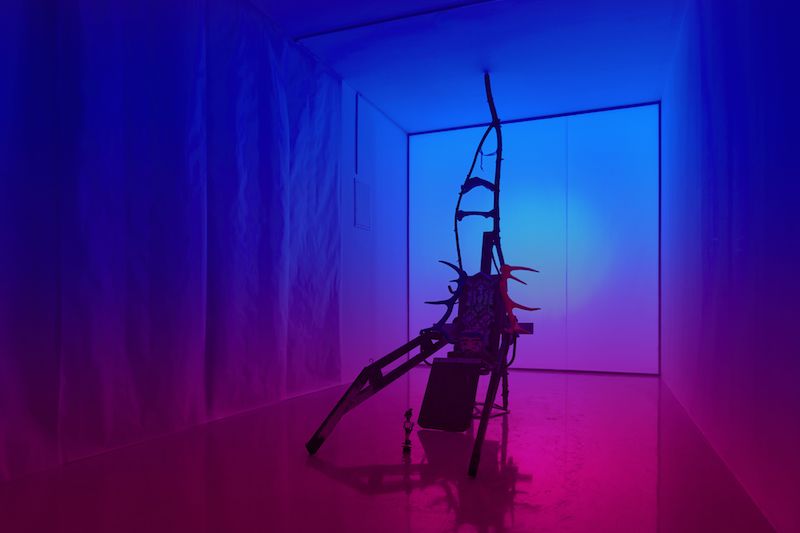
Borsos Lorinc. “For the child of the future”, 2023/24, installation view at ArtMill in Budapest // Photo by artist David Biro
Their first project together was Student Loan Debt in Hungarian Forints (2009), a painting depicting their student loan debt of HUF 789,279. There was no art market or patronage in Hungary before the fall of communism, and the development of commercial galleries only occurred at the turn of the millennium. The economic crisis of 2008 made it difficult to find potential collectors and made communication between artists and buyers less transparent. The painting symbolizes existential fragility and shows the position of young artists in an unstable socio-economic landscape. Against this backdrop, Borsos Llorints embodied the ideals of a new wave of artists who bypassed traditional institutions. Interestingly, the painting was paid for immediately and sold for the stated price.
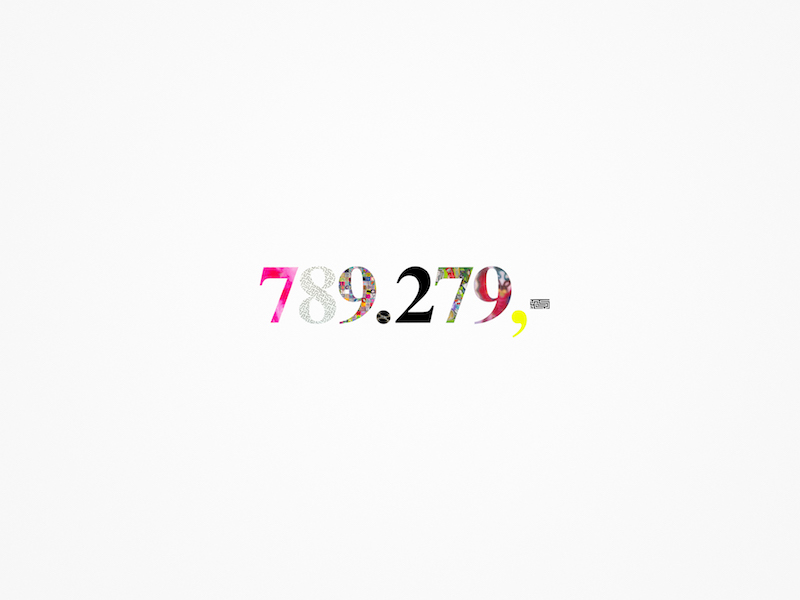
Borsos Lorinc. “My Student Loan Debt in Hungarian Forints,” 2008, Esterházy Private Foundation Collection // Photo: Miklós Sulio
From 2004 to 2010, the artistic duo were active members of the evangelical Christian community. To this day, they reflect on this time, analyze it critically, or view religious communities and practices more subjectively. In Immovable Land (2010), they wanted to question the stable and immovable world order that was built on Hungary's conservative Christian political system and reflect the chaotic political environment of the time. A scale model of the Hungarian parliament with a solid metal core symbolized this stability until the viewer got closer. This movement caused the touchpad to vibrate, and the structure gradually disintegrated. The installation put an end to any repairs; it was completed only when the last drop of dust fell from the table.
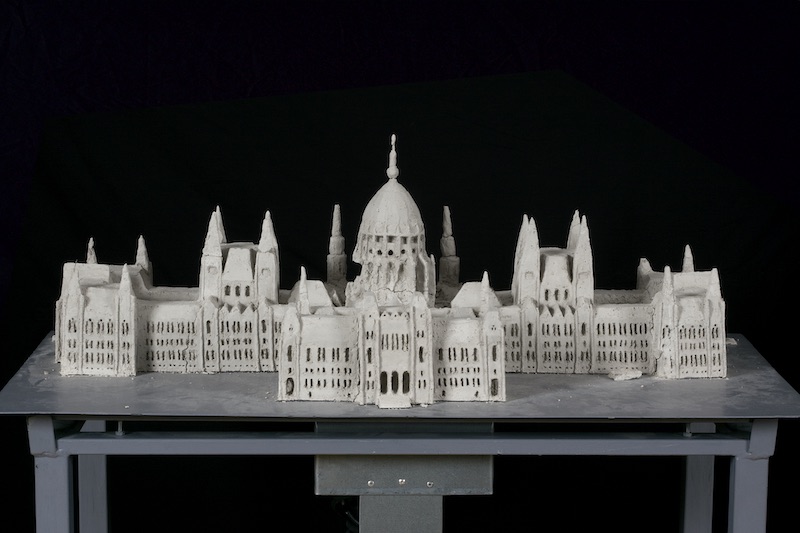
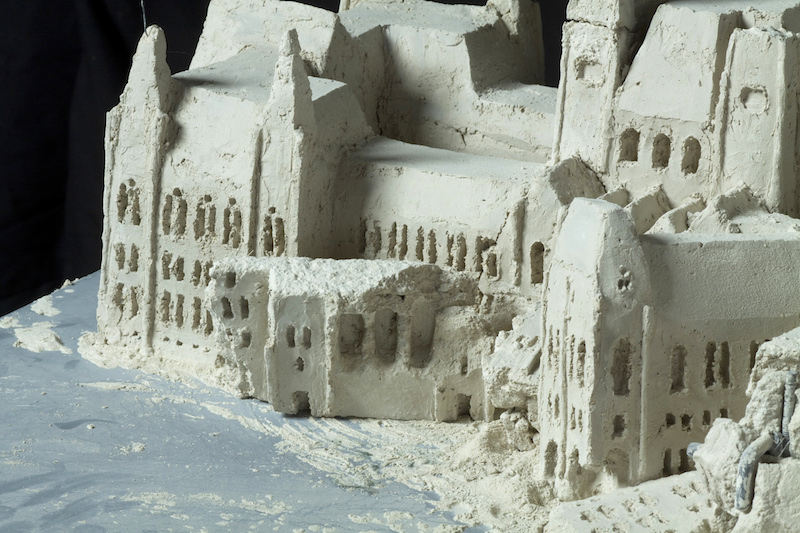
Borsos Lorinc. “Real Earth”, 2010, Installation |: 1:300 scale model of the Hungarian Parliament fire, shaking table, motion detector | 50x100x130 cm // Photo by Miklos Sulek
Following their socially critical work, the couple turned to disclosure and self-reflection. In the project Self-Critical Portrait (2016), they explored the personality of Borsos Llorints through a series of images. By incorporating a psychotherapist into their practice, they, as an artist duo, explored issues of power, hierarchy, and identity dissonance in personal relationships.
One of the defining aspects of Borsos Lőrinc is the constant reconstruction of its identity, activities and artistic goals. Over the past 16 years, the fluidity of her practice has redefined the transgressive and underground contemporary art scene in Hungary and Budapest, critically examining Hungary's political anomalies and socio-cultural struggles. Their collaborative methods and strategies challenge the white cube academic climate while bridging the boundaries between contemporary art communities and the electronic music and entertainment scene. As you said. “Our goal was to create a holistic piece of art that touches all the senses and can be part of it. That’s why we started organizing events and festivals mainly in the underground techno scene in Budapest.”
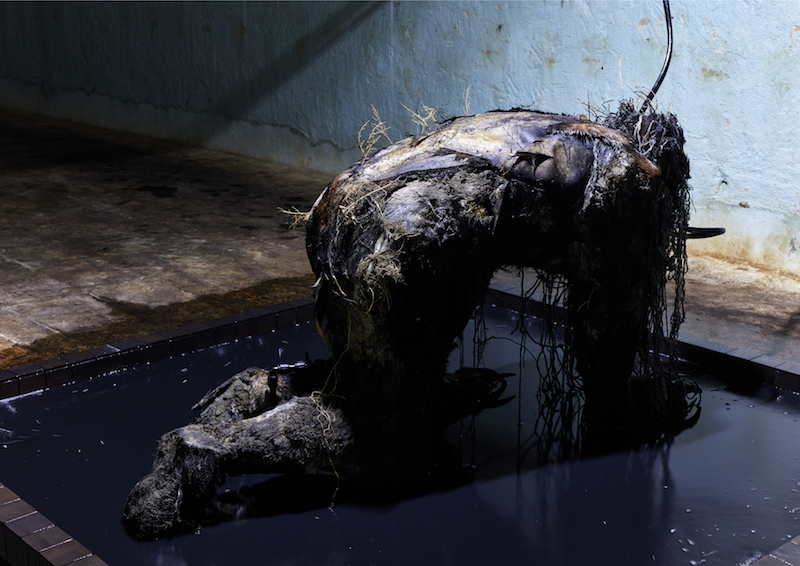
Borsos Lorinc. “Chaos reigns / A káosz prójnik”, 2019-2021 // Technical partner: Zalan Adoryan, photo: David Biro
The Budapest Arts Quarter (aqb) houses the duo's studio as well as an exhibition space, music venue and artist residency, creating an interface between Budapest's nightlife and contemporary art. This restraint reinforces collaborative tendencies and creates a platform for underground and experimental art forms, such as performance art or noise music, that are not defined in the museum environment. This strategy, used by both the art space and the duo, creates a space for reimagining the virtualized cybernetic body and returning the physical sensations of ecstasy, eroticism and ritual. For example, the group exhibition “My Thoughts” (2020) in Akb, where Borsos Lirinç’s laser installation “Trinity Model” (2020) transforms the space with industrial noise and red laser lights and entangles visitors in a single audiovisual film. not just an audience, but an experience.
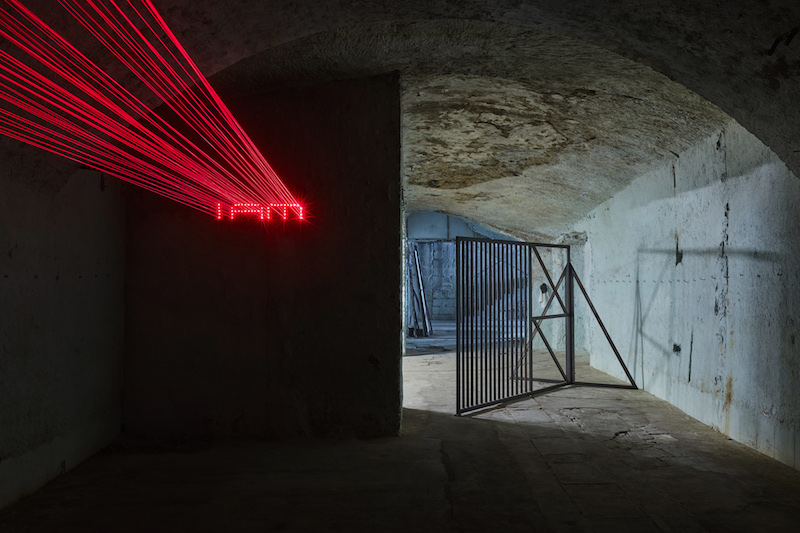
Borsos Lorinc. Trinity Model, 2020, Art of the Budapest Neighborhood // Photo by David Biro
Their latest exhibition, Children of the Future (2023), divided the museum space into two thematic zones: an artificial gift reminiscent of a techno-bunker, and a post-apocalyptic dystopian museum space from the inside out. The interior of the first area was completely covered in black foil, giving the museum a construction site aesthetic, while the second area looked like a deconstructed white cube where the walls of the museum had collapsed. Industrial black enamel paints play an important role in the Borsos Llorinci practice. It absorbs and reflects light and embodies metaphysical emptiness, exploring metaphorical themes and the presence of absence.
The pair explained how the show's aesthetic fits with their interest in the underground music scene: "We've been active in both the fine arts and nightlife scene since 2000, with a few breaks and lineup changes. boundaries between them. We tried to combine its dialectic with a scaffolding, a total installation that covers space and organizes into a narrative the atmospheres that arise within the framework of different aesthetics within the same exhibition.”
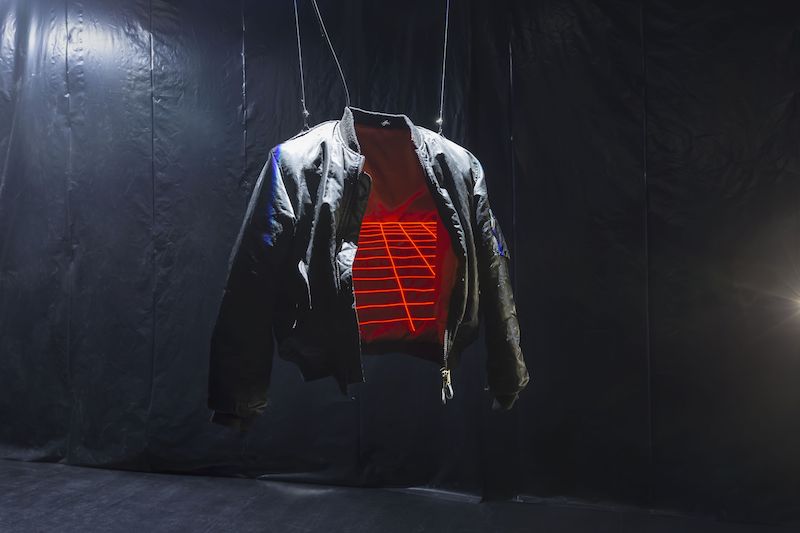
Borsos Lorinc. “For the child of the future”, 2023/24, installation view at ArtMill in Budapest // Photo by artist David Biro
Visible artifacts—costumes and paraphernalia left over from a techno party or labyrinthine installation space—help reveal the rules of an unknown ritual and represent memories of a future era in which technological and biological evolution are secondary and participation roles are interchangeable. play. . Video game characters must preserve and reconstruct the ritual based on the information they leave behind. So in the exhibition we can read the objects that need to be broken in order to continue our journey, as well as the experience of Borsos Llorints. They reflect her interest in the aesthetics of games; “What we love about the artistic practice of computer games is that by working in society and creating alternative realities, life itself becomes play, self-expression, experimentation with materials and exploration. “They also exercise complete freedom.”
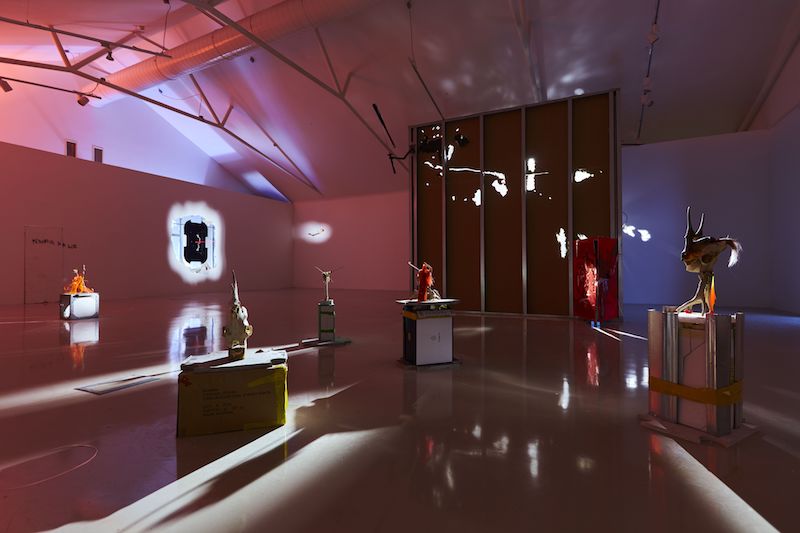
Borsos Lorinc. “For the child of the future”, 2023/24, installation view at ArtMill in Budapest // Photo by artist Balazs Deim
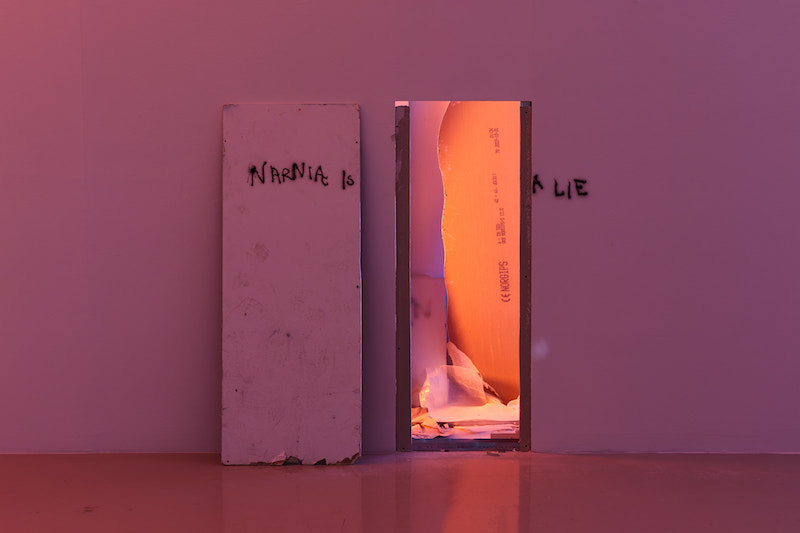
Borsos Lorinc. “For the child of the future”, 2023/24, installation view at ArtMill in Budapest // Photo by artist David Biro
An exploration of post-apocalyptic video game-like worldbuilding strategies and spaces explores the idea of role-playing in constructed simulacra and artificial, moving alternate realities. This techno-futuristic reality they want to reveal can destroy the technological uniqueness and theme of modern art, thereby calling into question the holy trinity of the artist, the artwork and the viewer. Exploring the strange nature of technology and exploring alternative forms of human existence is a central and recurring theme in Borsos Llorinci's practice.
This year, the pair have been busy with an exhibition at New York's Hessel Museum in April and the upcoming release of János Borsos' (aka Mike Nylons) new album on experimental Hungarian electronic music label Temporary Nights.
Artist information
borsoslorinc.com


Post a Comment